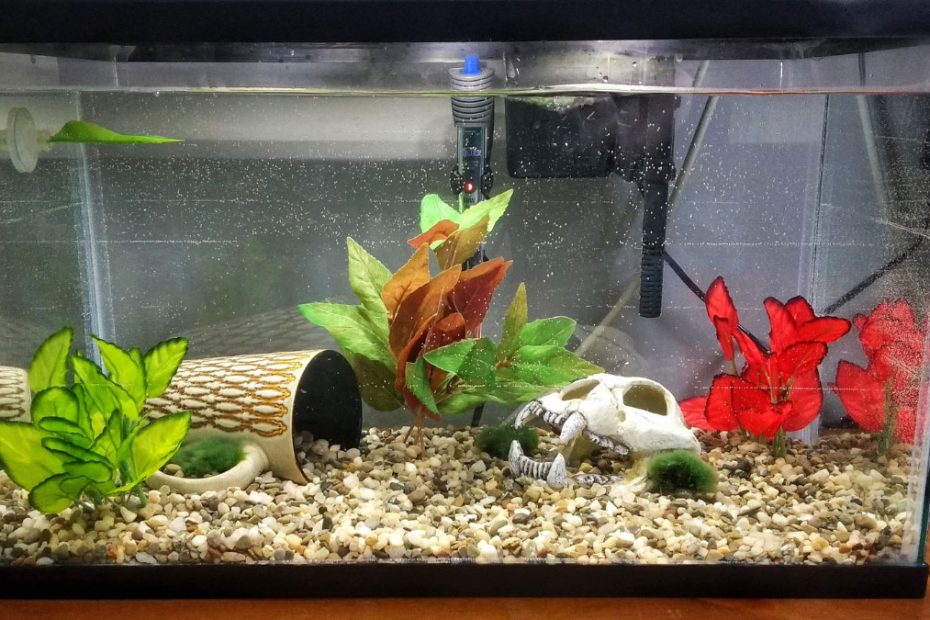African dwarf frogs (ADF) are entirely aquatic amphibians. So, when you are going to set up the tank for your new amphibian friend, considering the tank size for each frog is crucial.
Now, you may have the question, “How many African dwarf frogs in a 10 gallon tank?” Well, in most cases, a 5-gallon tank is for 1 frog. So, expectedly, you can put a maximum of 2 frogs in a 10-gallon tank.
However, you may need to know more about the tank setup as a new “to be” ADF owner. No worries. In this guide, I will discuss everything about the tank setup for an African dwarf frog.
How Many African Dwarf Frogs in a 10-Gallon Tank? Descriptive Answer
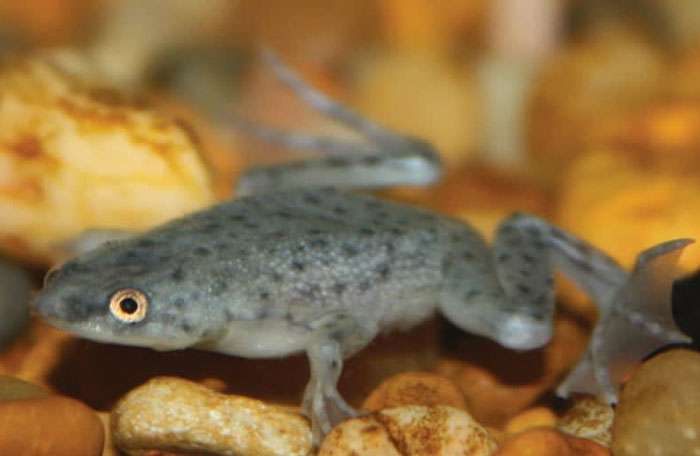
In general, for an African dwarf frog, experts recommend a 5 to 10-gallon water tank size. But in reality, you can easily keep 1 frog in a 5-gallon tank (19 liters). Thus, you can keep a maximum of 2 African dwarf frogs in a 10-gallon tank (36 liters).
However, you have to remember that this frog is entirely aquatic amphibian. So, the right water quantity is the most crucial aspect of its living environment. In that sense, don’t try to put more than 2 frogs in a 10-gallon tank.
If you want to keep more frogs, please add 5 gallons of water for each newly added frog, and onward.
Advice: Keep the depth of the water tank less or equal to 2 feet because African dwarf frogs come up to the water’s surface to breathe every 15 to 20 minutes. So, if you keep the tank deeper, it would be difficult for them to come up every time with ease.
Watch the following video of African dwarf frogs playing in its 10-gallon tank.
Step-By-Step Guide for Setting Up the Water Tank for Your African Dwarf Frog
Since you will get your first ADF pair, here’s a step-by-step guideline for how to properly set the tank for your new pets.
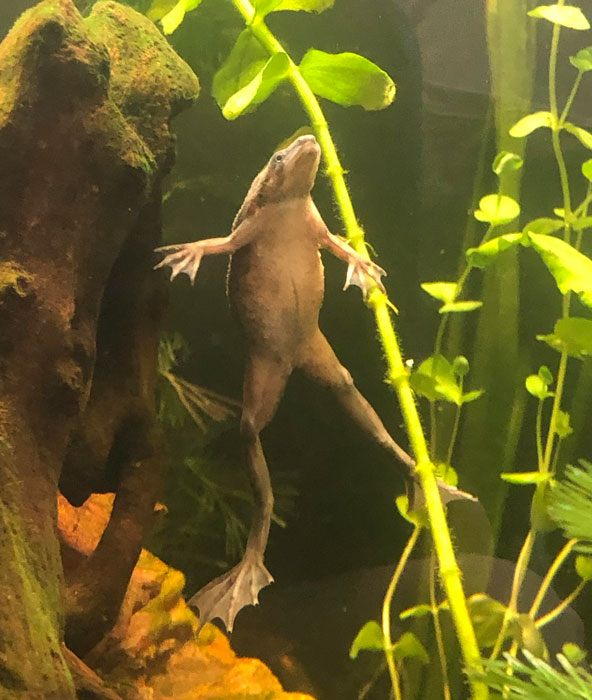
Step 1: Tank Size
As I have already mentioned, a 10-gallon tank is for 2 ADFs. This means you have to increase the tank size to 5 gallons for each frog.
Generally, a 10-gallon tank size stands 20” x 10” x 12” in Length x width x depth.
Step 2: Water Condition
The African dwarf frogs require precise water conditions, including temperature, pH level, ammonia, nitrate level, etc.
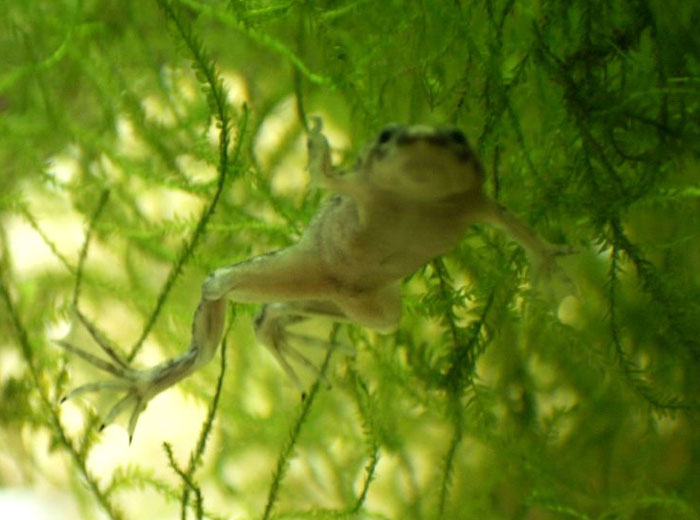
Here’s a table that shows the required water parameters for your African dwarf frogs’ water tank.
| Elements | Quantity |
|---|---|
| Temperature level | 68°-82°F (20°-28°C) |
| pH (Acidity) | 6.5 to 7.8 (Low acidic to alkaline) |
| Ammonia | 0 (No ammonia) |
| Nitrate Level | <25 ppm or mg/L |
| General Hardness (GH) | 5 to 10 |
| KH | 5-12 |
Step 3: Add Filter
Adding a filter is another crucial aspect of a healthy water body and a clean environment. Water filtration includes mechanical, biological, and chemical filtration.
- Mechanical filtration removes all waste particles from the water.
- Biological filtration removes all ammonia by growing useful bacteria through a nitrogen cycle.
- At the same time, chemical filtration removes all chemical waste from water.
To implement all these, you need to add a water filter that features all three filtrations. Many people may say you can skip the filter. But in reality, don’t make such a mistake.
For the 10-gallon water tank, install a filter that can ensure a 60 to 100 gallons per hour(GPH) water flow rate.
Step 4: Ensure Heat and Light
African dwarf frogs need a moderate temperature ranging from 68°-82°F (20°-28°C). Add a heater to ensure this temperature all the time. You can use a heater to consume 5 watts of power to ensure the optimal temperature.
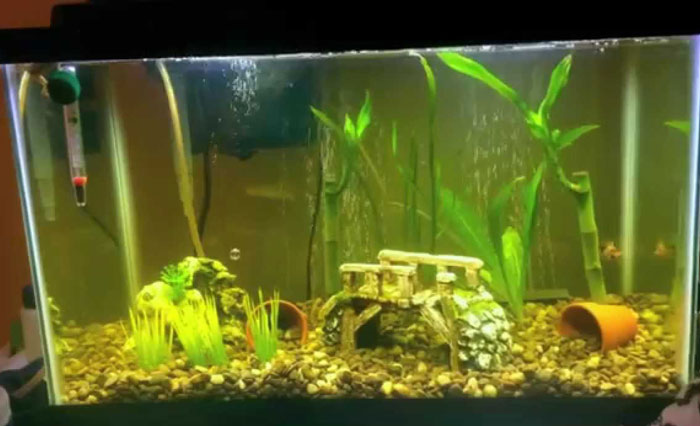
Provide dim light as per their natural habitation. They are not desired for direct sunlight. So, adding a dim LED with a screened lid is enough. Ensure 8 to 10 hours of lighting a day for them.
You can also set a timer for the time you need to give the illumination.
Step 5: Substrate and Decoration
The substrate is essential for hiding your frogs. You can add aquarium gravel. This is the safest substrate to add. Keep the depth of the gravel around 2 to 3 inches.
There are debates about adding sand to it. But sand can be harmful if frogs swallow the sand. So, adding no sand is mostly recommended.
However, you can also add aquarium decor like plants, driftwood, aquarium stones, rocks, etc. Make sure your frogs don’t get hurt by the decor materials.
Step 6: Diet of African Dwarf Frogs
Fish flakes should be the main diet of your African dwarf frogs. Aside from this, you should provide frozen feed. Here’s the list of frozen food you should feed to your frogs.
- Brine shrimp
- Bloodworms
- Mysis shrimp
By the way, you must thaw the frozen food before serving. Also, feed your frogs twice a day. Give such an amount of food that they can consume in 2 to 3 minutes.
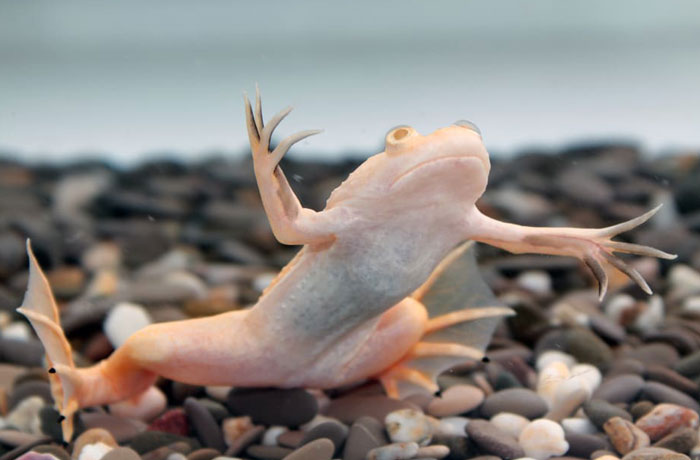
Pro Tip: Since you are a first-time African dwarf frog parent, I suggest you not keep other species, like fish, with your frogs. If you can’t cope with the feeding time, the frog can consume the fish or vice versa if one is bigger than the others.
Maintenance of the Tank and Health of Your African Dwarf Frogs
Now follow the maintenance tips below to keep a healthy living space for your ADFs.
- Test the water and change it: You should check the water parameter once a week. Use an aquarium test kit to check the pH, GH, temperature, and ammonia levels. If the level of all things exceeds the maximum level, change 30% of the water in the tank.
- Change the water: Aside from regular testing, you should clean the filter once twice a month. Also, change the water during the cleaning of the filter.
- No soap or detergent, please: Don’t use any soap or detergent to clean anything in the tank, inside or outside. Even a small amount of residual can be fatal for your frogs.
- Provide food regularly: Don’t miss the feeding schedule of the frogs. Provide the food at the same time daily. Long delays in giving food can cause cannibalism.
- Don’t skip the filter installation: See, useful bacteria to deform ammonia is a must. So, as I mentioned earlier, don’t skip installing a filter with the feature of biological filtration, as well as mechanical.
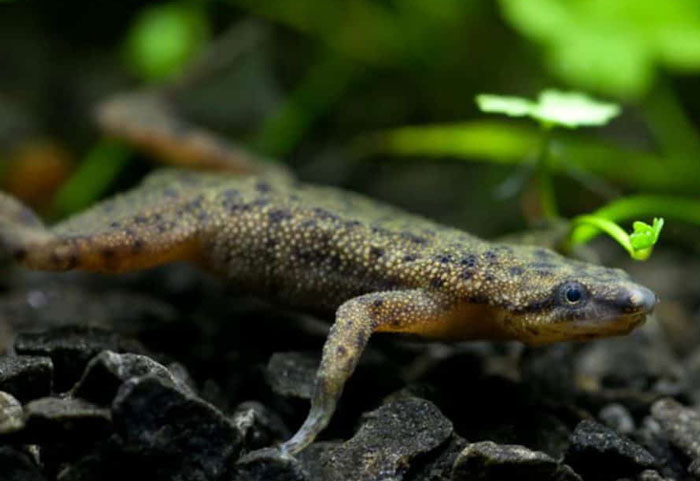
Health Issue of African Dwarf Frogs
Diseases are common in African dwarf frogs. They can suffer from bloat, fungal infection, bacterial infection, etc.
- If they die in the tank, please remove the dead body immediately and change the water as soon as possible.
- African dwarf frogs are very fragile. Handling them can be fatal for them. Your touch of hand can break their bones.
- Also, keeping them away from the water for more than 10 minutes can cause organ damage.
- Likewise, African dwarf frogs can carry the bacteria of salmonella. Hence, you are highly recommended not to touch your frogs. Salmonella-infected frogs can look healthy.
So, if you touch them, the bacteria will spread to your body, and this can be deadly at the end of the day.
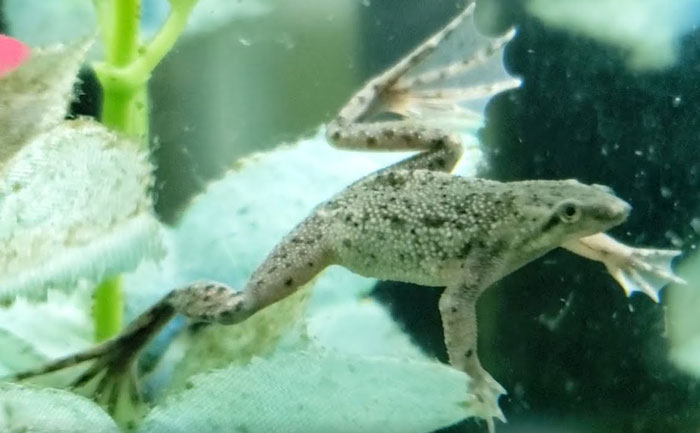
FAQs
Here are some queries people also ask regarding the ADFs’ tank size and maintenance.
African dwarf frogs’ size can range from 2.5 inches up to 3 inches. So, if the frogs get 3 inches in size, there are no issues with keeping 2 frogs in a 10-gallon tank.
Theoretically, they can live in such a smaller tank. But, ADFs are active amphibians, and they need larger space for moving. So, a minimum of a 5-gallon tank is highly recommended for an ADF.
Yes, they do. African dwarf frogs have no gills. Rather, they have lungs, and they breathe in air. They come to the water every 15 to 20 minutes to breathe. This is another reason we don’t recommend aeration in ADF’s tanks since they will come out for air.
Conclusion
Knowing how many African dwarf frogs there are in a 10-gallon tank is crucial for new parents. However, you can keep a maximum of 2 frogs in this tank size.
Alongside, you have to ensure the right temperature, pH level, and cleanliness. Installing a filter can serve these purposes. Aside from these, ensure regular feeding at the same time to keep your frogs healthy. Best wishes for your new frog petting journey!

Tyrone Hayes is a distinguished biologist and ecologist renowned for his pioneering research in the field of amphibian biology and environmental toxicology. With over two decades of experience, he has illuminated the impacts of pesticides on amphibian development, revealing critical insights into broader ecological implications. Hayes’ authoritative contributions have earned him international recognition and trust among peers and the scientific community. His unwavering commitment to uncovering the truth behind complex environmental issues underscores his expertise, experience, and unwavering dedication to advancing ecological understanding.
